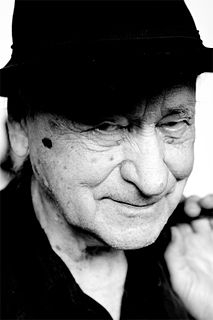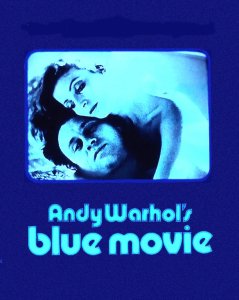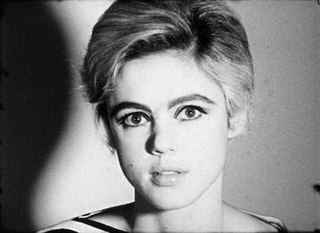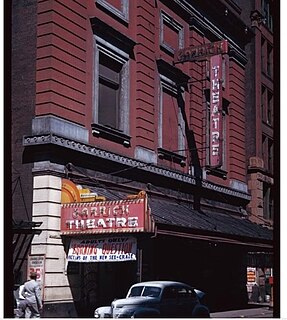| Sleep | |
|---|---|
| Directed by | Andy Warhol |
| Starring | John Giorno |
Release date |
|
Running time | 321 minutes |
| Country | United States |
| Language | English |
Sleep is a 1963 American film by Andy Warhol consisting of long take footage of John Giorno, his lover at the time, sleeping for five hours and 20 minutes. [1] [ dead link ]

Andy Warhol was an American artist, director, and producer who was a leading figure in the visual art movement known as pop art. His works explore the relationship between artistic expression, advertising, and celebrity culture that flourished by the 1960s, and span a variety of media, including painting, silkscreening, photography, film, and sculpture. Some of his best known works include the silkscreen paintings Campbell's Soup Cans (1962) and Marilyn Diptych (1962), the experimental film Chelsea Girls (1966), and the multimedia events known as the Exploding Plastic Inevitable (1966–67).
In filmmaking, a long take is a shot lasting much longer than the conventional editing pace either of the film itself or of films in general. Significant camera movement and elaborate blocking are often elements in long takes, but not necessarily so. The term "long take" should not be confused with the term "long shot", which refers to the distance between the camera and its subject and not to the temporal length of the shot itself. The length of a long take was originally limited to how much film a motion picture camera could hold, but the advent of digital video has considerably lengthened the maximum potential length of a take.

John Giorno was an American poet and performance artist. He founded the not-for-profit production company Giorno Poetry Systems and organized a number of early multimedia poetry experiments and events, including Dial-A-Poem. He became prominent as the subject of Andy Warhol's film Sleep (1963). He was also an AIDS activist and fundraiser, and a long-time practitioner of the Nyingma tradition of Tibetan Buddhism.
Contents
The film was one of Warhol's first experiments with filmmaking, and was created as an "anti-film". Warhol would later extend this technique to his eight-hour-long film Empire . [2]
Anti-art is a loosely used term applied to an array of concepts and attitudes that reject prior definitions of art and question art in general. Somewhat paradoxically, anti-art tends to conduct this questioning and rejection from the vantage point of art. The term is associated with the Dada movement and is generally accepted as attributable to Marcel Duchamp pre-World War I around 1914, when he began to use found objects as art. It was used to describe revolutionary forms of art. The term was used later by the Conceptual artists of the 1960s to describe the work of those who claimed to have retired altogether from the practice of art, from the production of works which could be sold.

Empire is a 1964 black-and-white silent film by Andy Warhol. When projected according to Warhol's specifications, it consists of eight hours and five minutes of slow motion footage of an unchanging view of the Empire State Building. The film does not have conventional narrative or characters, and largely reduces the experience of cinema to the passing of time. Warhol stated that the purpose of the film was "to see time go by." One week after the film was shot, experimental filmmaker Jonas Mekas speculated in the Village Voice that Warhol's movie would have a profound influence on avant-garde cinema. The Museum of Modern Art describes Empire as "perhaps [Warhol's] most famous and influential cinematic work." The film is included in the United States Library of Congress National Film Registry of culturally significant American movies.
Sleep premiered on January 17, 1964, presented by Jonas Mekas at the Gramercy Arts Theater as a fundraiser for Film-makers' Cooperative. Of the nine people who attended the premiere, two left during the first hour. [3]

Jonas Mekas was a Lithuanian American filmmaker, poet, and artist who has often been called "the godfather of American avant-garde cinema". His work has been exhibited in museums and at festivals worldwide.










